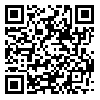Volume 9, Issue 3 (Summer 2021)
PCP 2021, 9(3): 179-188 |
Back to browse issues page
Download citation:
BibTeX | RIS | EndNote | Medlars | ProCite | Reference Manager | RefWorks
Send citation to:



BibTeX | RIS | EndNote | Medlars | ProCite | Reference Manager | RefWorks
Send citation to:
Nasiry S, Nasiry N, Noori M. Psychometric Properties of COVID-19 Dot-probe Task in Iranian Adults. PCP 2021; 9 (3) :179-188
URL: http://jpcp.uswr.ac.ir/article-1-755-en.html
URL: http://jpcp.uswr.ac.ir/article-1-755-en.html
1- Department of Clinical Psychology, School of Medicine, Shahid Beheshti University of Medical Sciences, Tehran, Iran. , snasiry@sbmu.ac.ir
2- Department of Psychology, Faculty of Social Sciences, Imam Khomeini International University, Qazvin, Iran.
3- Department of Clinical Psychology, School of Medicine, Shahid Beheshti University of Medical Sciences, Tehran, Iran.
2- Department of Psychology, Faculty of Social Sciences, Imam Khomeini International University, Qazvin, Iran.
3- Department of Clinical Psychology, School of Medicine, Shahid Beheshti University of Medical Sciences, Tehran, Iran.
Abstract: (4848 Views)
Objective: After the COVID-19 outbreak, corona anxiety has become prevalent all over the world. To understand and treat this type of anxiety, researchers have examined its relationship with attentional bias, a phenomenon closely associated with other types of anxiety. The dot-probe task is a common instrument used for the evaluation of attentional bias. However, the psychometric properties of this instrument, when used for the assessment of attentional bias towards corona-related stimuli, are unknown. This study aimed to evaluate the psychometric properties of the COVID-19 dot-probe task to see whether its application in COVID-19 studies is justified.
Methods: A total of 362 Iranian adults completed the COVID-19 dot-probe task and Corona Anxiety Disease Scale (CADS), 146 of whom repeated this procedure after two weeks to provide test-retest data. Split-half reliability, the Cronbach α, intraclass correlation coefficient of test-retest scores, and associations between COVID-19 dot-probe task and CADS were calculated using SPSS v. 26.
Results: The study results indicated that the standard version of the COVID-19 dot-probe task lacks internal consistency, test-retest reliability, and criterion validity, whereas the response-based version of the instrument promotes all of these psychometric properties to an acceptable level.
Conclusion: COVID-19 dot-probe task is a psychometrically sound instrument for evaluating corona-related attentional bias and investigating its role in the mechanism of corona anxiety, only if the response-based method of computation is used for calculating the measures of attentional bias.
Methods: A total of 362 Iranian adults completed the COVID-19 dot-probe task and Corona Anxiety Disease Scale (CADS), 146 of whom repeated this procedure after two weeks to provide test-retest data. Split-half reliability, the Cronbach α, intraclass correlation coefficient of test-retest scores, and associations between COVID-19 dot-probe task and CADS were calculated using SPSS v. 26.
Results: The study results indicated that the standard version of the COVID-19 dot-probe task lacks internal consistency, test-retest reliability, and criterion validity, whereas the response-based version of the instrument promotes all of these psychometric properties to an acceptable level.
Conclusion: COVID-19 dot-probe task is a psychometrically sound instrument for evaluating corona-related attentional bias and investigating its role in the mechanism of corona anxiety, only if the response-based method of computation is used for calculating the measures of attentional bias.
Type of Study: Original Research Article |
Subject:
Psychometric
Received: 2021/04/13 | Accepted: 2021/08/16 | Published: 2021/07/19
Received: 2021/04/13 | Accepted: 2021/08/16 | Published: 2021/07/19
| Rights and permissions | |
 |
This work is licensed under a Creative Commons Attribution-NonCommercial 4.0 International License. |








